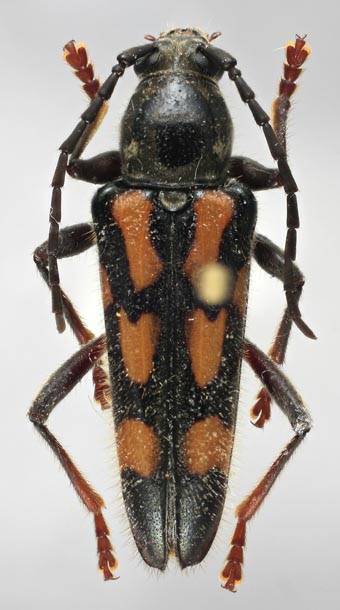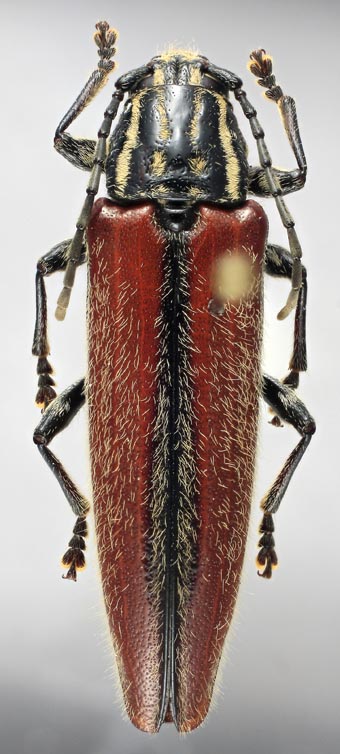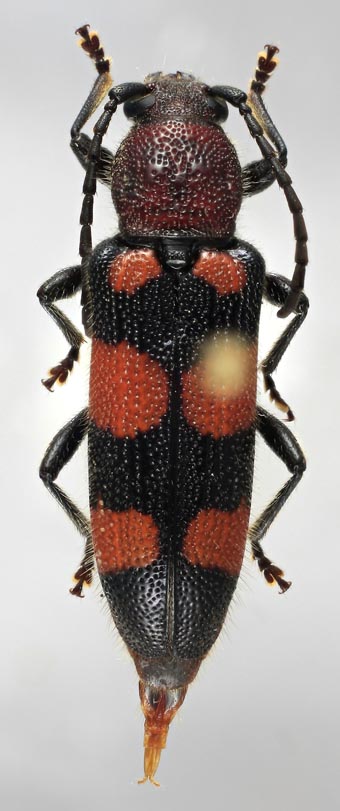|
Agallissini Classification
Selected References to Larvae Specimens |
 Agalissus lepturoides (Chevrolat, 1849); dorsal Cerambycidae:Cerambycinae:Agallissini Photograph © E.H. Nearns  Osmopleura chamaeropis (Horn, 1893); dorsal Cerambycidae:Cerambycinae:Agallissini Photograph © E.H. Nearns  Zagymnus clerinus LeConte, 1873; dorsal ♀ specimen Cerambycidae:Cerambycinae:Agallissini Photograph © E.H. Nearns |

